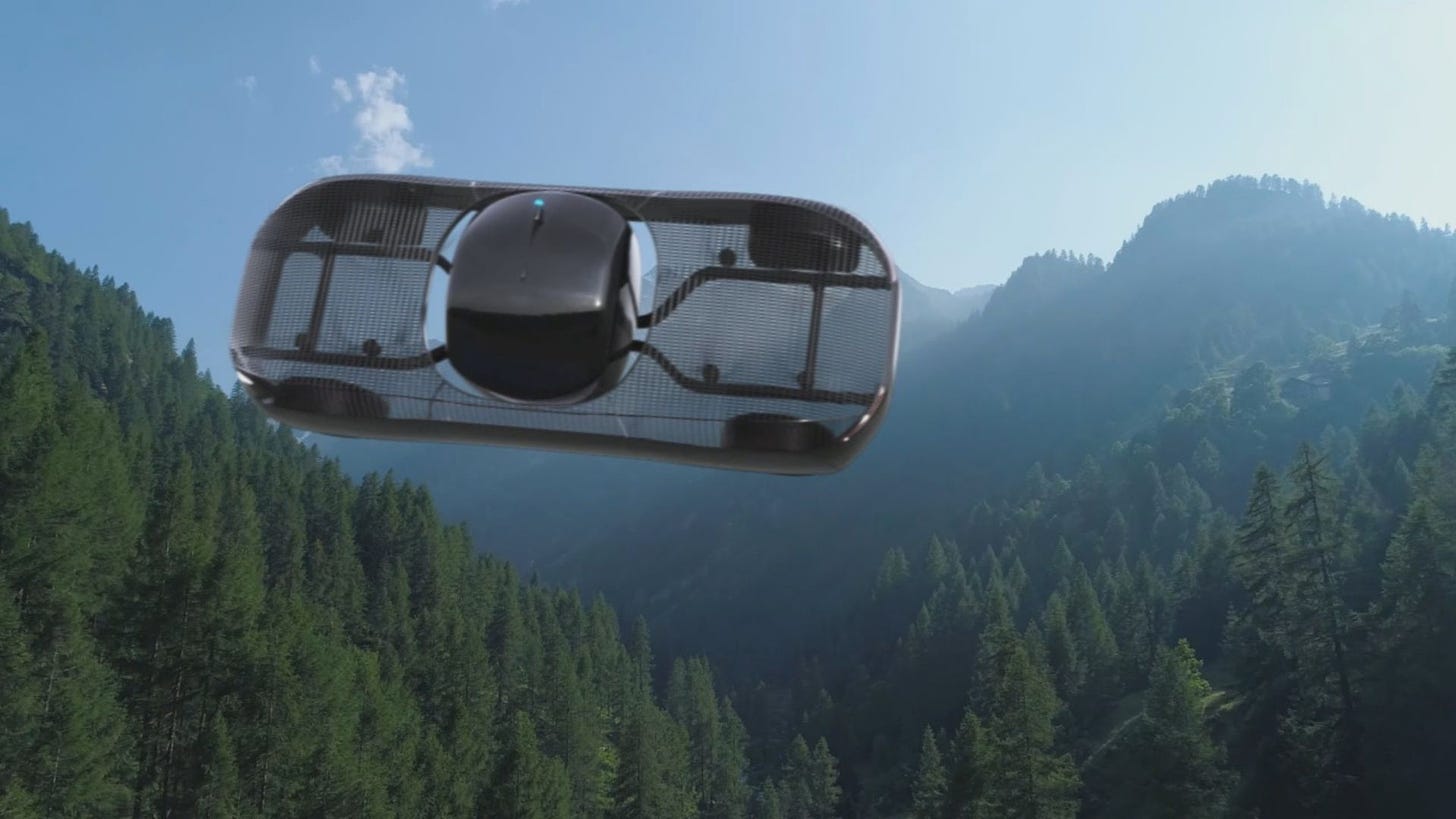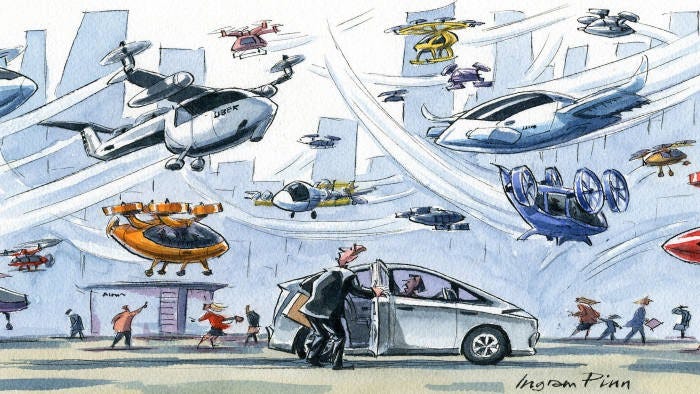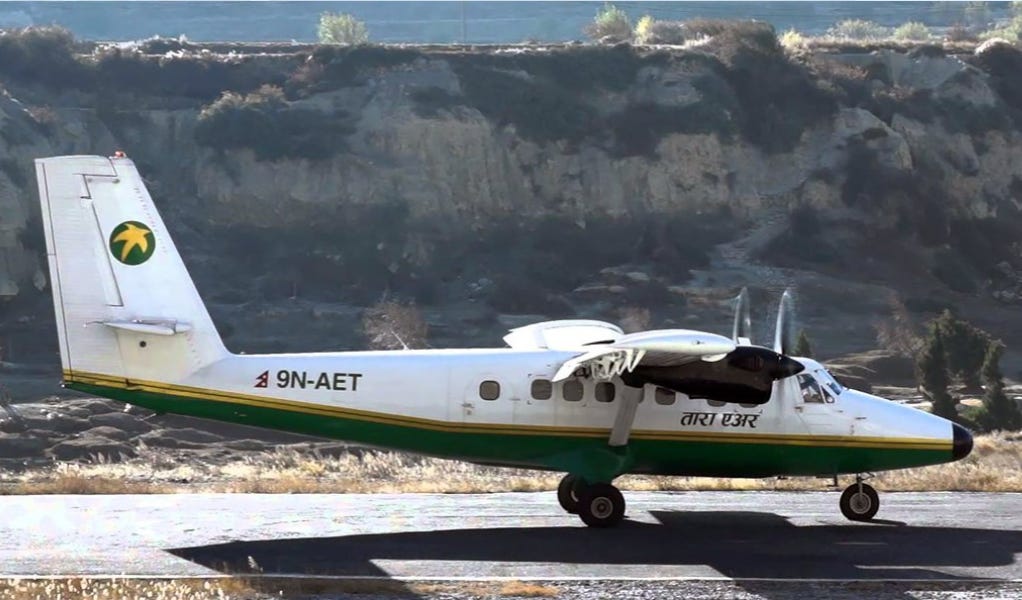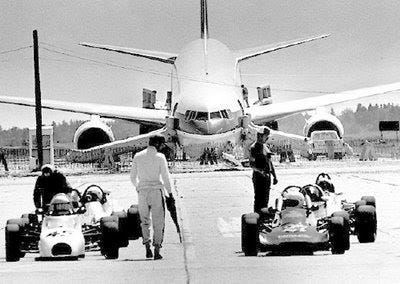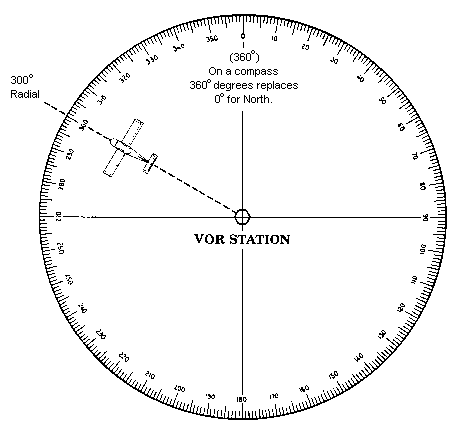Alef Aeronautics recently announced it had received a Special Airworthiness Certification from the US Federal Aviation Administration (FAA) to test fly its “Model A” car. The company intends to sell the car for around $300,000 and has already started accepting deposits from $150 to $1,500. Hang on to your money. Like Marc Andreessen’s idyllic nonsense about artificial intelligence, the claims this company is making do not sound realistic. Here is how they describe it:
Designed to drive on the street, take off vertically when needed and fly overhead above traffic, we're building the solution to the issues of modern congestion, [w]e enable faster and easier commutes, driven by proprietary technology that elevates the vehicle without the need for runways.
Let’s break it down.
What is a “Special Airworthiness Certification”?
There are many categories of this certification, but Alef Aeronautics’ press release does not reveal which it received. Title 14 CFR Section 21 is the US law that details the provisions of each type of certificate. That section is quite lengthy, but fortunately the FAA has summarized it nice and neatly:
Primary - Aircraft flown for pleasure and personal use
Restricted – Agricultural, forest and wildlife conservation, aerial surveying, patrolling (pipelines, power lines), weather control, aerial advertising, other operations specified by the Administrator
Multiple - Multiple airworthiness certificates
Limited - Light Sport Category to operate a light-sport aircraft, other than a gyroplane, kit-built, or transitioning ultralight like vehicle
Experimental - Research and development, showing compliance with regulations, crew training, exhibition, air racing, market surveys, operating amateur-built aircraft, operating kit-built aircraft, operating light-sport aircraft, unmanned Aircraft Systems (UAS)
Special Flight Permit - Special-purpose flight of an aircraft that is capable of safe flight
Provisional - Aircraft with a "provisional" category type certificate for special operations and operating limitations
The press release gives some hint toward which certificate it might be, stating “Alef's Special Airworthiness Certificate [] limits the locations and purpose for which Alef is permitted to fly.” Of the above categories, the certificate the company most likely received was either for an “experimental” or “provisional” permit. Under § 21.195(a) of Title 14, “A manufacturer of aircraft manufactured within the United States may apply for an experimental certificate for an aircraft that is to be used for market surveys, sales demonstrations, or customer crew training.” Section 91.317 permits flights under the provisional certification for “demonstration [] by the manufacturer for prospective purchasers.” Alef Aeronautics probably sought one of these certifications to perform its sales demonstration, but it likely would have to receive a certification under the primary category to begin commercial distribution.
Source: Alef Aeronautics
How does one Legally Fly an aircraft?
The certification hardly matters because the notion that people will soon be able to avoid traffic by taking off “vertically when needed and fly overhead,” among several of the company’s other claims, is farfetched. To get a simple private pilot’s license, the lowest level license in the USA (not counting student), one must complete at least 40 hours of training overseen by a Certified Flight Instructor (CFI). Student pilots must maintain an endorsed logbook of flight hours and activities, pass an airman’s medical exam, pass the written FAA exam, and complete all of the following before obtaining a license to fly on one’s own at will:
3 hours of cross-country flight training
3 hours of night flight training consisting of:
One cross country flight over 100 nautical miles total distance
10 takeoffs and 10 landings to a full stop with each landing involving a flight in the traffic pattern at an airport
3 hours of flight training on control and maneuvering solely by reference to instruments
3 hours of flight training with an authorized instructor in preparation for the practical test within the preceding 2 calendar months from the month of the test
10 hours of solo flight time consisting of:
5 hours of solo cross-country time
One solo cross-country flight of 150 nautical miles total distance with full stop landings at three points and one segment of the flight consisting of a straight-line distance of more than 50 nautical miles between takeoff and landing locations
Three takeoffs and three landings to a full stop (with each landing involving a flight in the traffic pattern) at an airport with an operating control tower
Presumably, for any person planning to take their flying car for an aerial ride they also would have to satisfy these requirements (private pilot license requirements vary in some countries, but most are similar to the USA’s standards). Large numbers of people suddenly becoming licensed pilots hardly seems likely given that it is quite expensive (the last time I took an instructional flight it cost about $230 per hour in the northeastern USA). Moreover, in many places, it is difficult to book flight time due to a dearth of instructors, available training planes, or good weather. It is unclear whether one could perform any of the required training in one of Alef's vehicles, though a CFI would almost certainly need to be rated on the unit if it is allowed. Moreover, it is doubtful—for now anyway—that an airport would allow such a vehicle to takeoff or land. Therefore, before taking their Alef Aviation Model A or Z for a flight, drivers (pilots?) would have to commit to a significant number of hours and expense first—assuming they could meet all the requirements.
It is possible that Alef is intending to eventually register the vehicle as an ultralight craft, but that doesn’t fit in with what the company’s marketing proposes or the configuration of the vehicle. Notably, a pilot license is not required for operating an ultralight aircraft. Under Title 14, Chapter I, Subchapter F, Part 103, an ultralight vehicle can only have one occupant and must weigh less than 254 pounds (empty). One article stated that the Alef vehicle “should” weigh around 200 pounds, but this seems improbable given that it is battery powered. The lightest battery of commercially available vehicles is in the Toyota Prius, and weighs around 118 pounds. That is a hybrid battery. In full EVs, like the Tesla Model S, the battery weighs 1,200 pounds—it’s lightest one. Alef vehicles are fully powered by electricity, and are not hybrids.
If the Alef vehicle does qualify as ultralight, then it creates problems for the company’s claims about alleviating congestion by lifting off the highway and soaring over traffic. For one, the skies would fill with vehicles carrying just one per person. Reports suggest that the Alef vehicle can carry two, but would not be allowed to fly as an ultralight then. Regardless, for single occupied vehicles, the more people who want to fly, the more vehicles would fill the sky. Creating more room for small capacity traffic merely adds more traffic. Economists call the concept induced demand; Adam Mann of Wired explains it this way: “increasing the supply of something (like roads) makes people want that thing even more.” Similarly, increasing the supply of flying cars will make more people want them.
Aside from being unable to fly with a passenger as an ultralight aircraft, the other problem with certifying the Alef vehicle this way is that § 103.15 prohibits the operation of “an ultralight vehicle over any congested area of a city, town, or settlement, or over any open air assembly of persons.” This seemingly precludes lifting up and flying over traffic as the company proclaims. Given that problem, it seems improbable that Alef plans to register its flying cars as ultralight aircraft. The fact that the company obtained an air worthiness certificate further supports this conclusion as § 103.7 explicitly states that ultralight aircraft do not require such a certificate. If not certified as an ultralight aircraft, operators would need to get their pilot license absent a wholesale regulatory change in licensing operators of flying cars.
What would our world look like with an ever-increasing influx of cars flying around the sky?
The overwhelming majority of aircraft accidents occur in the general aviation sector (i.e., private pilots/planes). This is because commercial carriers use far more sophisticated aircraft, and their pilots engage in significantly more training. In 2021 in the USA, there were 1,156 general aviation (non-commercial) crash events, 210 of which involved fatalities. The FAA estimates that there are currently over 160,000 private pilots in the USA. What might crash numbers look like if that number rose exponentially? Moreover, given Alef’s selling point of avoiding traffic, many people piloting their vehicles would be doing so over densely populated areas, raising the odds of ground fatalities. People have a general propensity for operating motor vehicles poorly. In 2019, for instance, there were 12.15 million road accidents (any kind of reported collision) among 228.7 million drivers in the USA. That’s a roughly 5.31% accident rate. Compare that to commercial flight incidents, which had an accident rate of 1.58% (the majority of which happen on the ground). Worse than that, road fatalities in 2022 averaged 1.34 deaths for every 100 million miles traveled. Commercial Airlines, by comparison, averaged 0.007 deaths per 100 million miles. The International Air Transport Association (IATA) calculates that at the current commercial air fatality rate, “a person would need to take a flight every day for 10,078 years to be involved in an accident with at least one fatality.” As the numbers show, without sustained training practices such as those adopted by the commercial air industry, private flying-cars will inevitably lead to growing numbers of disasters and deaths.
Source: Flying taxis will bring traffic jams to the sky
How would drivers fly?
Drivers of ground-based motor vehicles are effectively responsible for two axes—forward and backward, and left and right. Except under the most extreme circumstances, they do not need to account for wind direction or speed, cloud composition, atmospheric pressure, angle of attack, lift, weight, drag, thrust, or weather (other than visibility or road conditions). Flying an aircraft, however, requires consideration of all these factors. An aircraft relies on lift to keep it aloft. Lift is generated by the airflow around the wings and other flight surfaces (rotors on a helicopter, for instance), and is countered by the weight of the aircraft pushing it down toward the surface. Thrust keeps the flow of air moving over the wings to provide the lift. Drag works against thrust, slowing the plane down either from the wind or obstructive surfaces on the aircraft itself (such as the speed brakes on a jet). A flying-car pilot would need to understand how the four primary forces work—lift, weight, drag, thrust—just to remain airborne.
Source: Aviation Stack Exchange
To maintain the required balance of these four forces, car-pilots also need to understand angle of attack. For a fixed-wing aircraft, the angle of attack (pitch up or down of the nose) cannot exceed a certain degree above the horizontal plane or it will destabilize the airflow over its wings and cause it to lose that critical lift. When this happens, it is referred to as an aerodynamic stall. It is possible to stall a single flight surface, such as a wing, which can lead to a spiral descent or other calamity.
According to the website Interesting Engineering, Alef’s Model A uses an elevon stabilization system along with “advanced software flight stabilization.” An elevon is a flight surface combining an elevator (which provides vertical control) and an aileron (which controls roll motion). Alef’s design apparently incorporates an engineering profile similar to the flight surfaces on the space shuttle, an adaptation often used for tailless aircraft (which Alef’s vehicle appears to be one). This system also helps to simplify the control inputs needed by the pilot and tends to reduce the overall weight of the flight surface assembly. It seems, then, that Alef’s elevon system combined with its “advanced software” is designed to reduce the amount of actual piloting required. But as anyone who has used any computing device anywhere knows, systems fail. Even on commercial airliners, which employ terrific amounts of redundancy, automation occasionally goes amok forcing the pilots to take manual control of the aircraft. With an untrained—or under-trained—person at the helm of an Alef vehicle, what is the expected result of a flying vehicle whose flight automation systems fail? Sure, the company boasts “triple to octuple redundancy,” but this has not been tested in a real-world environment with time and exterior conditions continuously degrading equipment and systems. Furthermore, privately owned flying cars will almost certainly not receive the same level of inspection and maintenance that commercial aircraft do.
Then there is the issue of visibility. In most countries, pilots operate under one of two conditions, variably called Visual Flight Rules (VFR) and Instrument Flight Rules (IFR). The former requires that a pilot maintains strict levels of visibility. While the exact restrictions vary from place to place, the general rule is that a pilot must be able to see at least 3 to 5 miles in any direction, and maintain anywhere from 500 to 2,000 feet of distance from cloud cover. (See here for the US rules). If the exterior conditions degrade such that the minimums cannot be kept, pilots are expected to detour away or land the plane. Changes in weather conditions are a primary factor in accidents that occur under visual flight rules. Controlled Flight into Terrain (CFIT) accidents, wherein a pilot crashes into a ground-based obstacle for non-mechanical or unintentional reasons, occur most frequently when pilots operating under VFR encounter bad weather without training or experience using instrumentation. For a more detailed discussion on this, see the Tara Air article below.
What about Flight Plans?
Even if a determined person managed to secure the private pilot’s license, and clearance to fly their Alef vehicle, they will face a new set of hurdles each time traffic irritates them. Prior to conducting any flight operating under instrument flight rules, pilots must file a flight plan with the authorities. It is inconceivable that regular day-to-day people will do this every time traffic annoys them on cloudy days. Thus, for most people this means that flights would only be allowed under visual flight rules. Traffic caused by snow or rainfall (which happens a lot) would not be avoidable by taking to the air on many or most of these days as visibility would be insufficient for VFR flight.
Flying under instrument flight rules requires additional training in most jurisdictions. Moreover, the flying vehicle must be equipped with sufficient equipment to operate under this paradigm. Deficient equipment—or lacking it altogether—also often leads to CFIT accidents. Basically, IFR requires the operator to properly and safely control the flight even in the total absence of external visual cues, such as at night or in fog or cloud cover. This is especially important for low-altitude flights (as these vehicles undoubtedly would conduct) because there is a much higher chance of encountering obstacles such as hills, buildings, aerial towers, and so forth. How operators of the Alef vehicle will meet these requirements is unknown. The vehicle purportedly comes with “obstacle recognition and avoidance,” but it seems necessary nonetheless that operators would need to know how to read and understand these systems for the occasions where they might need to take manual control. It is worth restating that no manned flight vehicle can or should rely solely on automation.
Even on the ground is a problem
Any owner who wishes to keep his or her airworthiness certificate must ensure the aircraft stays in sufficient flying condition (except for ultralight aircraft). When the FAA certifies an aircraft as airworthy, the maintenance program must be laid out as well. While the owner/operator of an aircraft can perform routine maintenance, other repairs or modifications require an FAA-approved technician to do the work. The provisions governing who can fix what, when, and how are quite complex. See Title 14, Chapter 1, Subchapter C, Part 43. Perhaps Alef plans to run FAA-approved shops similar to car dealership repair shops, but the pricing will undoubtedly be way higher, especially if they are required to employ at least some FAA-licensed mechanics. Besides price, though, owners will have a particularly difficult time knowing what maintenance procedures they are even allowed to perform. The chapter noted above contains dozens of subsections along with at least 5 appendices that outline the various rules pertaining to aircraft maintenance. And because the vehicles are made to travel on the nation’s highways, they will also have to pass their requisite state inspections. To satisfy both bodies of regulations—aircraft and street vehicle—will these flying units need to meet FAA-compliant lighting, instrument, and other standards as well as federal and state road transportation requirements?
Insurance
I am not an insurance adjuster and I do not know enough about aviation insurance to comment on or explore this issue in any depth. That said, anyone who drives a car now is well aware of the challenges with insurance. The costs are extraordinary, and many insurers go to great lengths to deny claims. Moreover, if one does file a claim, regardless of fault, the premium often rises. If these Alef vehicles go into mass production, and a few of them drop out of the sky into the parking lots otherwise known as urban American freeways, I can only imagine the affect that will have on premiums—premiums that will likely start exceedingly high in the first place.
The Faux Futurism Effect
As technology companies seem increasingly habituated to doing these days, Alef Aviation has engaged in a marketing scheme of a scantly considered product that it claims will “revolutionize” the way people do things. Like LLMs (Language Learning Machines, better known by proprietary names like ChatGPT or Google Bard), as soon as these companies make some stride in development, they rush it to the market without any concern for its impact on society. (Although to be fair, Alef seems to have at least developed an operational platform unlike certain other tech companies). We have already seen the global havoc the premature release of LLMs has caused and continues causing. The prospect of hundreds of thousands or millions of vehicles weighing in excess of several hundred pounds hurdling through the air, held aloft on the hope that the software works better than Tesla’s Autopilot, so its untrained operator does not need to take the controls, is harrowing.
How this company is hawking its product provides even less reason to be optimistic. Alef CEO Jim Dukhovny told Reuters that the Model Z, which he says will sell for 1/10th of the price of the Model A currently being marketed, is “not more complicated than a Toyota Corolla.” Moreover, Alef claims that it expects to begin sales to the public in 2025, another mantra we’ve heard from tech “visionary” companies before (‘our revolutionary product will be available next month, next year,’ etc.). Even if the car is producible in high enough numbers to go to market by 2025, the chances that the regulatory framework will be in place is very low. Mike Ramsey, an auto and smart mobility analyst at Gartner stated “the regulatory challenges are going to be pretty substantial.” This is quite the understatement. Based on the seriousness with which the US government takes on any major regulatory framework—particularly when it comes to new tech—investment in this vehicle will likely lead to a $300,000 lawn ornament for some years.
For a discussion on US regulators’ paltry attempts at regulating tech, see this article. Scroll below that for more aviation articles. Thanks for reading!
***
I am a Certified Forensic Computer Examiner, Certified Crime Analyst, Certified Fraud Examiner, and Certified Financial Crimes Investigator with a Juris Doctor and a master’s degree in history. I spent 10 years working in the New York State Division of Criminal Justice as Senior Analyst and Investigator. Today, I teach Cybersecurity, Ethical Hacking, Digital Forensics, and Financial Crime Prevention and Investigation. I was a firefighter before I joined law enforcement and now I currently run a non-profit that uses mobile applications and other technologies to create Early Alert Systems for natural disasters for people living in remote or poor areas.
Find more about me on Instagram, Facebook, Twitter, LinkedIn, or Mastodon. Or visit my non-profit’s page here.
Visit the new Evidence Files Facebook page; Like, Follow or Share! Visit the Evidence Files YouTube page and Subscribe!
See below for articles on:
A Miracle in Aviation - the Gimli Glider;
Another miracle flight, but the miracle was that no one died despite total pilot malfeasance - Air Maroc 439; and
A detailed breakdown of the aviation industry in Nepal, viewing it from the lens of the crash of Yeti Air 691





